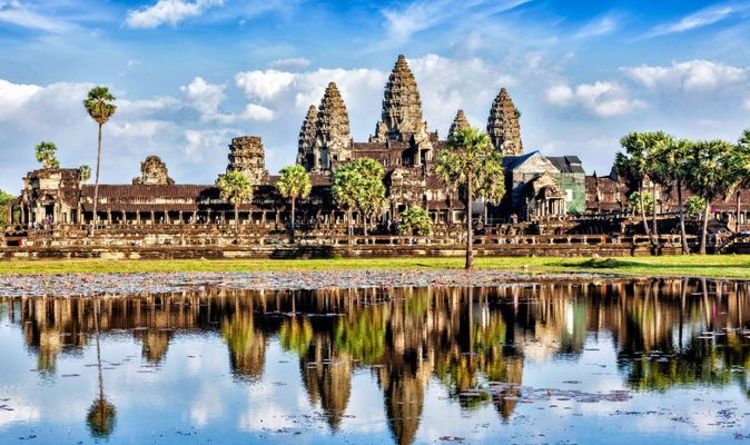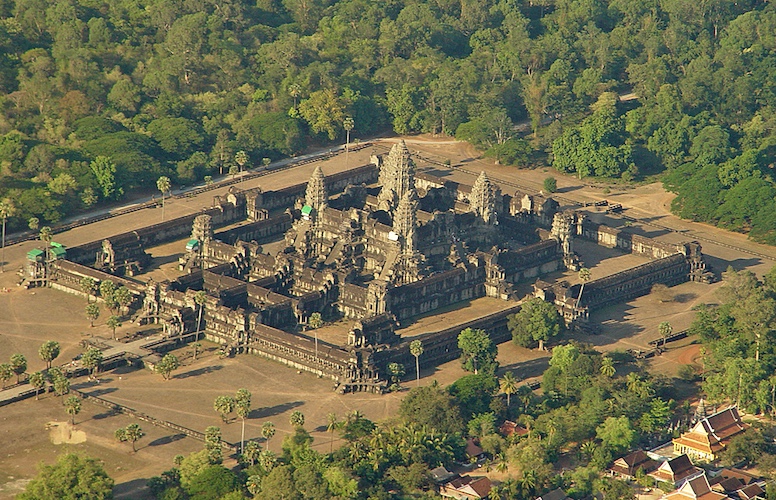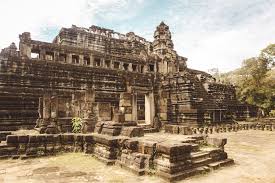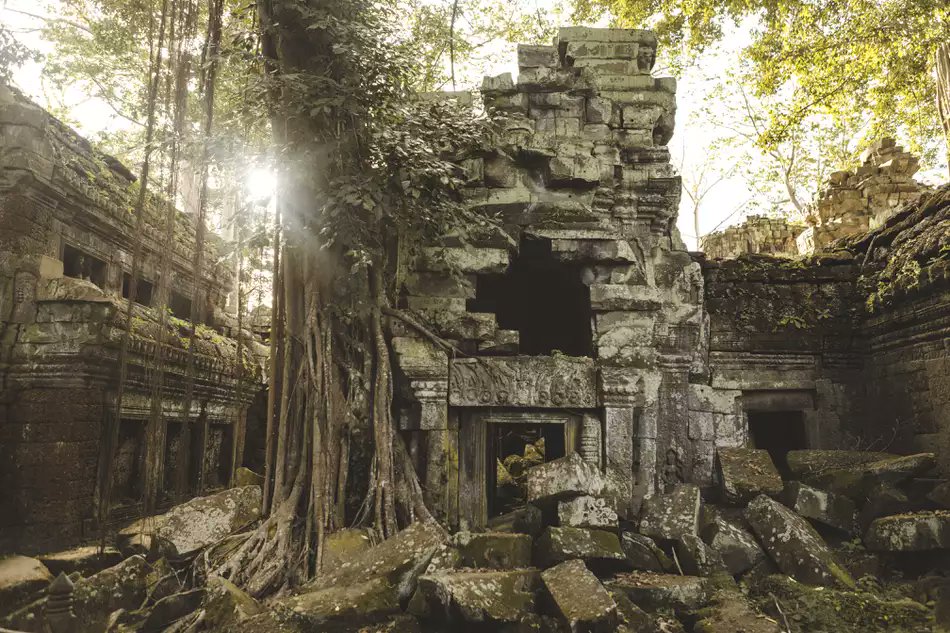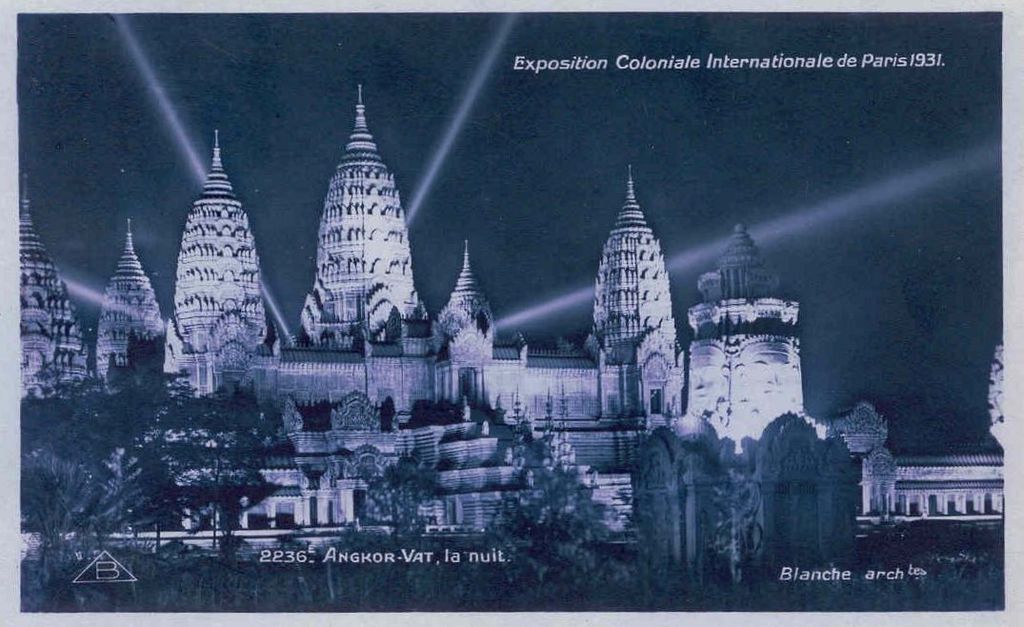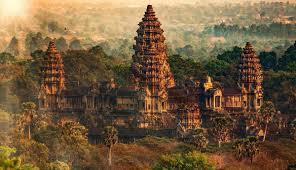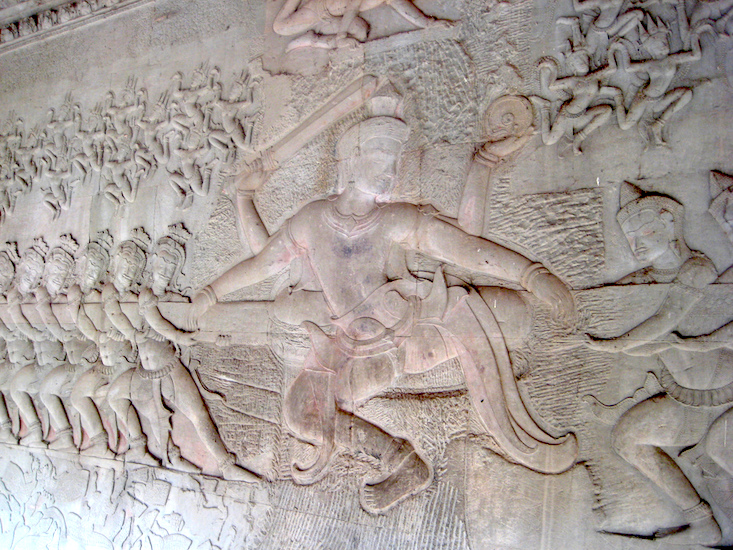It was listed as a UNESCO World Heritage Site in 1992, which encouraged an international effort to save the complex.
It was originally built as a Hindu temple dedicated to the god Vishnu. In Khmer, the Cambodian language, Angkor means "city" and Wat means "temple grounds".
So Angkor Wat means "Temple City". Its original name was Vrah Vishnuloka or Parama Vishnuloka, meaning the sacred dwelling of Vishnu in Sanskrit.
But, it gradually turned into a Buddhist temple towards the end of the 12th century & is still used for worship today.
Angkor Wat was initially designed and constructed in the first half of the 12th century, during the reign of Suryavarman II, as the king’s state temple and capital city. It was built without the aid of any machinery, as there was no machinery available at that time.
Evidence for these dates comes in part from inscriptions, which are vague, but also from the architectural design and artistic style of the temple and its associated sculptures.
Another aspect is that the five central towers of Angkor Wat symbolize the peaks of Mount Meru,
which according to Purana is the sacred five-peaked mountain standing in the center of the universe. It's said that the three Hindu chief gods - Brahma, Vishnu and Shiva and Hindu demi-gods (Devas) reside on the top of this mountain.
Also, according to our scriptures as well as the Khmer texts, religious monuments and specifically temples must be organized in such a way that they are in harmony with the universe, meaning that the temple should be planned according to the rising sun and moon,
in addition to symbolizing the recurrent time sequences of the days, months & years. The central axis of these temples should also be aligned with the planets, thus connecting the structure to the cosmos so that temples become spiritual, political, cosmological, astronomical and
geo-physical centers.
There are 1,200 square meters of carved bas reliefs at Angkor Wat, representing eight different Hindu stories. Perhaps the most important narrative represented at Angkor Wat is the “samundra manthan” (Churning of the Ocean of Milk),
which depicts a story about the beginning of time and the creation of the universe. It is also a story about the victory of good over evil. In the story, devas (gods) are fighting the asuras (demons) in order reclaim order and power for the gods who have lost it.
In order to reclaim peace and order, the elixir of life (amrita) needs to be released from the earth; however, the only way for the elixir to be released is for the gods and demons to first work together. To this end, both sides are aware that
once the amrita is released there will be a battle to attain it.
To honor its importance Cambodia has placed it on their national flag.
